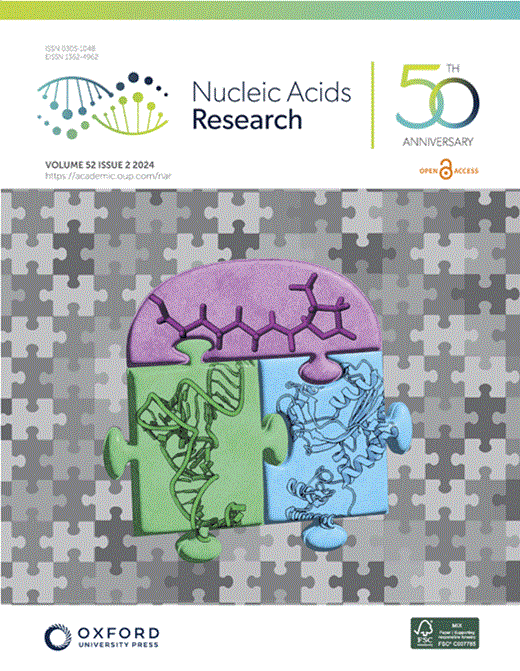Structure of the nucleosome-bound human BCL7A.
IF 16.6
2区 生物学
Q1 BIOCHEMISTRY & MOLECULAR BIOLOGY
引用次数: 0
Abstract
Proteins of the BCL7 family (BCL7A, BCL7B, and BCL7C) are among the most recently identified subunits of the mammalian SWI/SNF chromatin remodeler complex and are absent from the unicellular version of this complex. Their function in the complex is unknown, and very limited structural information is available, despite the fact that they are mutated in several cancer types, most notably blood malignancies and hence medically relevant. Here, using cryo-electron microscopy in combination with biophysical and biochemical approaches, we show that BCL7A forms a stable, high-affinity complex with the nucleosome core particle (NCP) through binding of BCL7A with the acidic patch of the nucleosome via an arginine anchor motif. This interaction is impaired by BCL7A mutations found in cancer. Further, we determined that BCL7A contributes to the remodeling activity of the mSWI/SNF complex and we examined its function at the genomic level. Our findings reveal how BCL7 proteins interact with the NCP and help rationalize the impact of cancer-associated mutations. By providing structural information on the positioning of BCL7 on the NCP, our results broaden the understanding of the mechanism by which SWI/SNF recognizes the chromatin fiber.求助全文
约1分钟内获得全文
求助全文
来源期刊

Nucleic Acids Research
生物-生化与分子生物学
CiteScore
27.10
自引率
4.70%
发文量
1057
审稿时长
2 months
期刊介绍:
Nucleic Acids Research (NAR) is a scientific journal that publishes research on various aspects of nucleic acids and proteins involved in nucleic acid metabolism and interactions. It covers areas such as chemistry and synthetic biology, computational biology, gene regulation, chromatin and epigenetics, genome integrity, repair and replication, genomics, molecular biology, nucleic acid enzymes, RNA, and structural biology. The journal also includes a Survey and Summary section for brief reviews. Additionally, each year, the first issue is dedicated to biological databases, and an issue in July focuses on web-based software resources for the biological community. Nucleic Acids Research is indexed by several services including Abstracts on Hygiene and Communicable Diseases, Animal Breeding Abstracts, Agricultural Engineering Abstracts, Agbiotech News and Information, BIOSIS Previews, CAB Abstracts, and EMBASE.
 求助内容:
求助内容: 应助结果提醒方式:
应助结果提醒方式:


